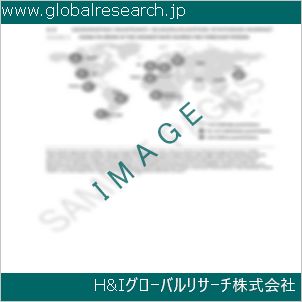Table of Contents
1 Industry Overview of Boron
1.1 Definition and Specifications of Boron
1.1.1 Definition of Boron
1.1.2 Specifications of Boron
1.2 Classification of Boron
1.3 Applications of Boron
1.3.1 Nuclear Application
1.3.2 Non-Nuclear Application
1.4 Industry Chain Structure of Boron
1.5 Industry Overview and Major Regions Status of Boron
1.5.1 Industry Overview of Boron
1.5.2 Global Major Regions Status of Boron
1.6 Industry Policy Analysis of Boron
1.7 Industry News Analysis of Boron
2 Manufacturing Cost Structure Analysis of Boron
2.1 Raw Material Suppliers and Price Analysis of Boron
2.2 Equipment Suppliers and Price Analysis of Boron
2.3 Labor Cost Analysis of Boron
2.4 Other Costs Analysis of Boron
2.5 Manufacturing Cost Structure Analysis of Boron
2.6 Manufacturing Process Analysis of Boron
3 Technical Data and Manufacturing Plants Analysis of Boron
3.1 Capacity and Commercial Production Date of Global Boron Major Manufacturers in 2023
3.2 Manufacturing Plants Distribution of Global Boron Major Manufacturers in 2023
3.3 R&D Status and Technology Source of Global Boron Major Manufacturers in 2023
3.4 Raw Materials Sources Analysis of Global Boron Major Manufacturers in 2023
4 Capacity, Production and Revenue Analysis of Boron by Regions, Types and Manufacturers
4.1 Global Capacity, Production and Revenue of Boron by Regions 2019-2024
4.2 Global and Major Regions Capacity, Production, Revenue and Growth Rate of Boron 2019-2024
4.3 Global Capacity, Production and Revenue of Boron by Types 2019-2024
4.4 Global Capacity, Production and Revenue of Boron by Manufacturers 2019-2024
5 Price, Cost, Gross and Gross Margin Analysis of Boron by Regions, Types and Manufacturers
5.1 Price, Cost, Gross and Gross Margin Analysis of Boron by Regions 2019-2024
5.2 Price, Cost, Gross and Gross Margin Analysis of Boron by Types 2019-2024
5.3 Price, Cost, Gross and Gross Margin Analysis of Boron by Manufacturers 2019-2024
6 Consumption Volume, Consumption Value and Sale Price Analysis of Boron by Regions, Types and Applications
6.1 Global Consumption Volume and Consumption Value of Boron by Regions 2019-2024
6.2 Global and Major Regions Consumption Volume, Consumption Value and Growth Rate of Boron 2019-2024
6.3 Global Consumption Volume and Consumption Value of Boron by Types 2019-2024
6.4 Global Consumption Volume and Consumption Value of Boron by Applications 2019-2024
6.5 Sale Price of Boron by Regions 2019-2024
6.6 Sale Price of Boron by Types 2019-2024
6.7 Sale Price of Boron by Applications 2019-2024
6.8 Market Share Analysis of Boron by Different Sale Price Levels
7 Supply, Import, Export and Consumption Analysis of Boron
7.1 Supply, Consumption and Gap of Boron 2019-2024
7.2 Global Capacity, Production, Price, Cost, Revenue, Supply, Import, Export and Consumption of Boron 2019-2024
7.3 USA Capacity, Production, Price, Cost, Revenue, Supply, Import, Export and Consumption of Boron 2019-2024
7.4 EU Capacity, Production, Price, Cost, Revenue, Supply, Import, Export and Consumption of Boron 2019-2024
7.5 China Capacity, Production, Price, Cost, Revenue, Supply, Import, Export and Consumption of Boron 2019-2024
7.6 Japan Capacity, Production, Price, Cost, Revenue, Supply, Import, Export and Consumption of Boron 2019-2024
8 Major Manufacturers Analysis of Boron
8.1 Manufacturer One
8.1.1 Company Profile
8.1.2 Product Picture and Specifications
8.1.2.1 Type I
8.1.2.2 Type II
8.1.2.3 Type III
8.1.3 Capacity, Production, Price, Cost, Gross and Revenue
8.1.4 Contact Information
8.2 Manufacturer Two
8.2.1 Company Profile
8.2.2 Product Picture and Specifications
8.2.2.1 Type I
8.2.2.2 Type II
8.2.2.3 Type III
8.2.3 Capacity, Production, Price, Cost, Gross and Revenue
8.2.4 Contact Information
8.3 Manufacturer Three
8.3.1 Company Profile
8.3.2 Product Picture and Specifications
8.3.2.1 Type I
8.3.2.2 Type II
8.3.2.3 Type III
8.3.3 Capacity, Production, Price, Cost, Gross and Revenue
8.3.4 Contact Information
8.4 Manufacturer Four
8.4.1 Company Profile
8.4.2 Product Picture and Specifications
8.4.2.1 Type I
8.4.2.2 Type II
8.4.2.3 Type III
8.4.3 Capacity, Production, Price, Cost, Gross and Revenue
8.4.4 Contact Information
8.5 Manufacturer Five
8.5.1 Company Profile
8.5.2 Product Picture and Specifications
8.5.2.1 Type I
8.5.2.2 Type II
8.5.2.3 Type III
8.5.3 Capacity, Production, Price, Cost, Gross and Revenue
8.5.4 Contact Information
…
9 Marketing Trader or Distributor Analysis of Boron
9.1 Marketing Channels Status of Boron
9.2 Traders or Distributors with Contact Information of Boron by Regions
9.3 Ex-work Price, Channel Price and End Buyer Price Analysis of Boron
9.4 Regional Import, Export and Trade Analysis of Boron
10 Industry Chain Analysis of Boron
10.1 Upstream Major Raw Materials Suppliers Analysis of Boron
10.1.1 Major Raw Materials Suppliers with Contact Information Analysis of Boron
10.1.2 Major Raw Materials Suppliers with Supply Volume Analysis of Boron by Regions
10.2 Upstream Major Equipment Suppliers Analysis of Boron
10.2.1 Major Equipment Suppliers with Contact Information Analysis of Boron
10.2.2 Major Equipment Suppliers with Product Pictures Analysis of Boron by Regions
10.3 Downstream Major Consumers Analysis of Boron
10.3.1 Major Consumers with Contact Information Analysis of Boron
10.3.2 Major Consumers with Consumption Volume Analysis of Boron by Regions
10.4 Supply Chain Relationship Analysis of Boron
11 Development Trend of Analysis of Boron
11.1 Capacity, Production and Revenue Forecast of Boron by Regions and Types
11.1.1 Global Capacity, Production and Revenue of Boron by Regions 2024-2029
11.1.2 Global and Major Regions Capacity, Production, Revenue and Growth Rate of Boron 2024-2029
11.1.3 Global Capacity, Production and Revenue of Boron by Types 2024-2029
11.2 Consumption Volume and Consumption Value Forecast of Boron by Regions, Types and Applications
11.2.1 Global Consumption Volume and Consumption Value of Boron by Regions 2024-2029
11.2.2 Global and Major Regions Consumption Volume, Consumption Value and Growth Rate of Boron 2024-2029
11.2.3 Global Consumption Volume and Consumption Value of Boron by Types 2024-2029
11.2.4 Global Consumption Volume and Consumption Value of Boron by Applications 2024-2029
11.3 Supply, Import, Export and Consumption Forecast of Boron
11.3.1 Supply, Consumption and Gap of Boron 2024-2029
11.3.2 Global Capacity, Production, Price, Cost, Revenue, Supply, Import, Export and Consumption of Boron 2024-2029
11.3.3 USA Capacity, Production, Price, Cost, Revenue, Supply, Import, Export and Consumption of Boron 2024-2029
11.3.4 EU Capacity, Production, Price, Cost, Revenue, Supply, Import, Export and Consumption of Boron 2024-2029
11.3.5 China Capacity, Production, Price, Cost, Revenue, Supply, Import, Export and Consumption of Boron 2024-2029
11.3.6 Japan Capacity, Production, Price, Cost, Revenue, Supply, Import, Export and Consumption of Boron 2024-2029
12 New Project Investment Feasibility Analysis of Boron
12.1 New Project SWOT Analysis of Boron
12.2 New Project Investment Feasibility Analysis of Boron
13 Conclusion of the Global Boron (CAS 7440-42-8) Industry 2024 Market Research Report
| ※参考情報 ホウ素(Boron)は、化学記号Bおよび原子番号5を持つ元素であり、周期表の第13族に属しています。この元素は非金属であり、地球上の自然界においては、主に鉱石として存在しています。ホウ素は、特異な化学的特性を持ち、そのためさまざまな用途が顕在化しています。以下では、ホウ素の概念、特徴、種類、用途、関連技術について詳しく述べます。 ホウ素は、自然界では主にホウ砂(Na2B4O7・10H2O)やオリビン鉱、ボログラスなどの鉱物に存在しています。ホウ素の特性としては、非金属であるため、通常は電気的に良好な導体ではありませんが、特定の条件下では半導体として振る舞うことがあります。また、ホウ素は化合物を形成する能力があり、さまざまな化合物が知られています。これらの化合物の中にはホウ酸(H3BO3)やホウ化物(ボラート)が含まれ、これらもまた多様な用途を持っています。 ホウ素は、さまざまな同位体が存在し、最も安定した同位体はホウ素-11とホウ素-10です。ホウ素-10は特に中性子の吸収特性に優れ、核工学や放射線治療の分野で重要な役割を果たしています。 ホウ素の特徴的な性質の一つは、その化合物の多様性です。例えば、ホウ素は酸素や水素、窒素などと反応し、多くの有機及び無機化合物を形成します。ホウ酸は、工業的に重要な化合物であり、広く使用されている一方で、ホウ化物は高融点材料として知られています。ホウ素の化合物は、強い結合を形成するため、耐熱性や耐腐食性が高いことが特長です。 ホウ素の用途は多岐にわたります。特に、ガラスやセラミックの製造において重要な役割を果たしています。ホウ素を添加することで、ガラスの耐熱性が向上し、セラミックの強度が増すため、多くの工業製品に組み込まれています。また、ホウ素は、合金の添加元素としても利用され、特に鉄や鋼においてその特性を向上させるために使用されます。これにより、鉄鋼業界における重要な素材となっています。 さらに、ホウ素は農業にも使用されています。ホウ素は植物の成長に必要な微量元素であり、特に果実や根の成長を促進します。ホウ素欠乏は植物の成長に悪影響を与えるため、肥料として利用されています。農業分野でのホウ素の使用は、土地の生産性向上に寄与しています。 近年では、ホウ素の関連技術も進展しています。特に、ナノテクノロジー分野での研究が進んでおり、ホウ素を含むナノ材料が注目を浴びています。ホウ素ナノシートは、その高い強度と軽量特性から、新しい材料や電子デバイスへの応用が期待されています。また、ホウ素を使用した触媒やセンサーの開発も進んでおり、これらは環境技術やエネルギー分野での利活用を促進する要因となっています。 最後に、ホウ素の有害性についても触れておきます。ホウ素は適切な管理の下で使用される限り、通常は安全とされていますが、高濃度のホウ素化合物は生物に悪影響を及ぼすことがあります。そのため、環境への影響を考慮した適切な取り扱いや廃棄が求められています。 このように、ホウ素はその特異な化学的特性と多様な用途を持ち、今後の技術を支える重要な元素であると言えるでしょう。産業界や研究分野でのホウ素の利用は今後も拡大し、新たな応用が見込まれています。 |
❖ 免責事項 ❖
http://www.globalresearch.jp/disclaimer


-gr.jpg)









